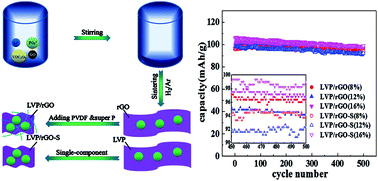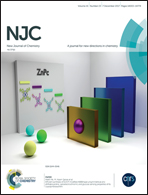Roles of coating carbon, conductive additive and binders in lithium vanadium phosphate/reduced graphene oxide composite cathodes
Abstract
The electrochemical performance of lithium transition metal phosphate cathode can be highly influenced not only by the active material itself but also by carbon coating, conductive additives and binders. This work presents a systematic study of the roles of the above factors using lithium vanadium phosphate/reduced graphene oxide composite (LVP/rGO composite) cathode as an example. A series of LVP/rGO composites were prepared via a sol–gel route as a function of coating carbon (rGO) content. Typical cathodes (with conductive additive and binder) and single-component cathodes (without conductive additive or binder) were fabricated for comparison. Results of SEM and electrochemical tests demonstrated that a conductive network composed of super P and PVDF shows compromised high rate performance due to the low conductivity of PVDF and lack of intimate contact between super P and the active material. As a coating carbon, rGO on one hand regulated the particle size of LVP and on the other hand formed a continuous conductive network tightly coated on LVP, which improved the electronic conductivity and maintains the electrode integrity. Supreme high rate performance was achieved using rGO coating carbon solely without any conductive additive or binder.



 Please wait while we load your content...
Please wait while we load your content...